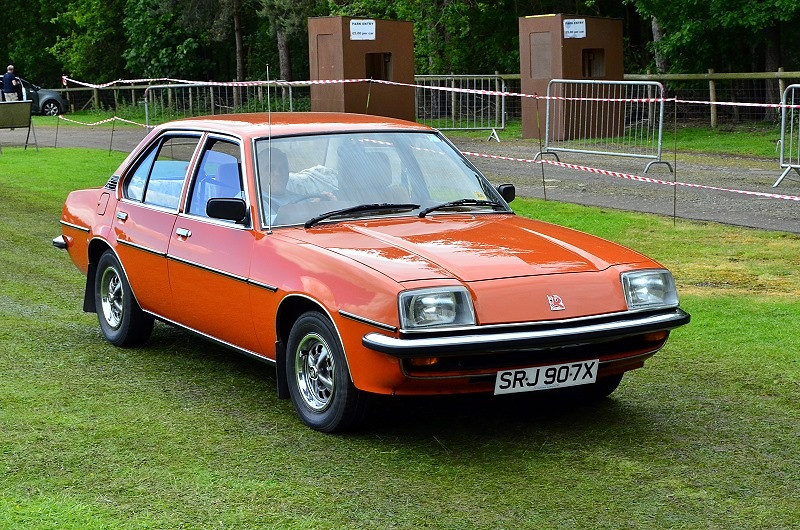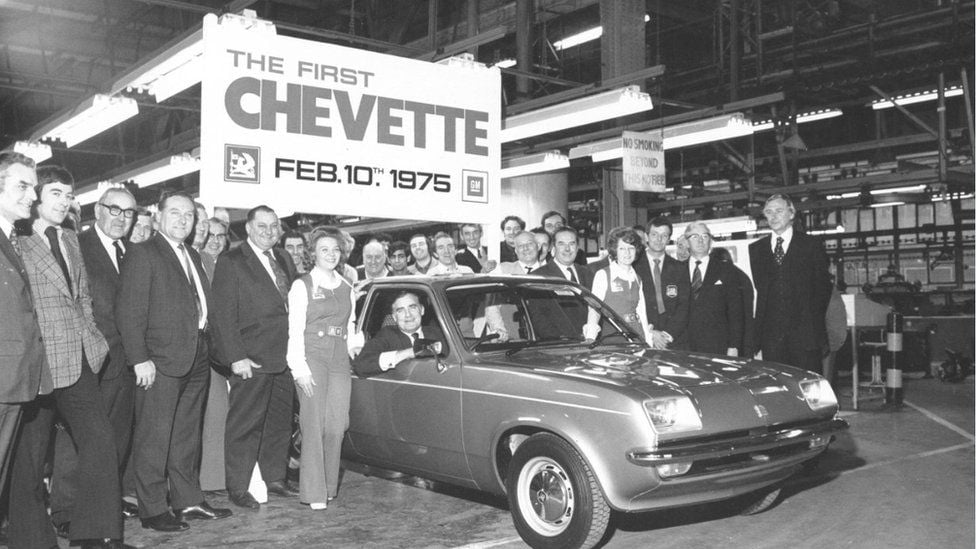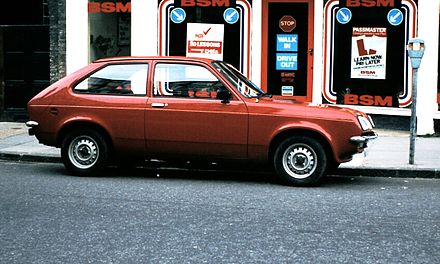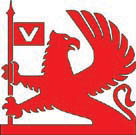When launched in 1975, the Chevette was a new departure for Vauxhall. It combined the General Motors T-Car platform that had proved so successful in Germany as the 1973 Opel Kadett C, and the willing 1256cc Viva engine/transmission package.
It was a very competent small car that was offered in saloon and estate car form. In addition, Vauxhall engineered a new hatchback rear end that ended up being used across the rest of General Motors, most notably as the Opel Kadett City. The ‘droopsnoot’ styling was penned in Luton by Wayne Cherry, and proved to be a Vauxhall styling signature for a decade after making its debut on the Firenza HP. It also set Vauxhall apart from its German counterpart, even if it meant that in a number of markets, the two companies ended up competing.
Easy to drive and a tidy handler, the Chevette proved popular enough to remain in production until 1984 – long after it should have been replaced by the Astra. It ended up making way for the Spanish-built Vauxhall Nova.










The Vauxhall Chevette is a supermini car that was manufactured by Vauxhall in the United Kingdom from 1975 to 1984. It was Vauxhall’s version of the “T-Car” small-car family from Vauxhall’s parent General Motors (GM), and based primarily on the Opel Kadett C. The family also included the Isuzu Gemini in Japan, the Holden Gemini in Australia, the Chevrolet Chevette in the United States, Canada, Brazil, Colombia, Ecuador and Argentina, and in the U.S. and Canada it was also rebadged as the Pontiac Acadian/Pontiac T1000.
Development
The Chevette, as its name implies, was intended to be a small (baby) Chevrolet. At the same time as the Chevette project was being considered in America, Vauxhall Motors publicised a new design project, provisionally referred to as the Baby R, but this was not used. Instead, a common design was chosen for all markets based upon an existing vehicle, the Opel Kadett. The car was first launched in Brazil in 1973 as a slightly restyled Kadett with a hatchback added to the model range. This hatchback was launched in the U.S. and Britain in 1975 with restyled front ends. Initial production was at Vauxhall’s Luton, Bedfordshire, factory, then Chevette assembly was moved to the Ellesmere Port plant in Cheshire to allow production of the larger Cavalier and Carlton models to be moved to Luton from Opel plants in Belgium and Germany.
The UK version of the vehicle was intended to fit into the Vauxhall range below the Viva, and was initially presented only in its hatchback version, a style that became very popular during the 1970s. With its Pontiac-inspired ‘shovel nose’ and inset headlamps, the UK version looked radically different from the Opel Kadett and was accepted by the motoring public as a completely new car; when the saloon, estate car, and van variants appeared and the hatchback was added to the Kadett lineup the common lineage became apparent. The Chevette was one of the first British-built hatchbacks of this size, the first arguably being the Austin A40 Countryman; Ford did not respond with a similar product until the following year (their similar-sized offerings all having conventional rear boots).
Sales began on 1 May 1975, from a price of £1,593.
From 1975 until 1978, the Chevette was the UK’s best-selling hatchback, as UK branded rivals failed to respond to the challenge of the imported Peugeot 104, Fiat 127, and Renault 5 until the arrival of Ford’s Fiesta at the end of 1976. Chrysler UK did not launch its Chrysler Sunbeam until 1977, while only in 1980 did British Leyland come up with the Austin Metro. The Chevette also managed to outsell larger hatchbacks, including the Austin Maxi and Chrysler Alpine.
The Chevette’s 1.3-litre engine and relatively small bodyshell allowed for good performance. The Chevette had a light steering, clutch, and gear change, as well as good visibility, and was spacious inside. The Chevette’s success was probably due to its versatility, which compared well with larger cars such as the Ford Escort. It was available in three-door hatchback for the single driver, saloon models that suited families, an estate car for the service fleets, and the Chevanne van version for utility purposes.
The original hatchback was launched in the UK using Vauxhall’s slogan and musical jingle, which capitalised on its practicality and widespread appeal: “It’s whatever you want it to be! – A sporty coupe, a family saloon, a handy estate…”.[2] It was made at the purpose-built factory in Ellesmere Port, Cheshire, under a government initiative to bring employment to the area.
More conventional two- and four-door saloons, and three-door estate variants (essentially the Kadett C with Vauxhall front bodywork and engines) were also offered from June 1976.[3] The two-door coupé version of the Kadett C was the only version of the Opel car not to have a Chevette equivalent.
The Viva was discontinued in 1979, with the Opel Kadett D entering production in the same year. This car was intended also to be produced in the US and UK, as the second-generation Chevette, but due to various industrial issues at the time, GM decided to shelve most of the Ellesmere Port plant, retaining only the assembly shop to build the new car. These would be assembled from knock-down kits, although they were initially imported fully built-up from Opel’s plant in Bochum.[4] Due to the huge loss of workforce this would cause, representations were made that resulted in the decision to continue production of existing models alongside the new. This meant that a new name would have to be found for Vauxhall’s version of the new Opel Kadett, so in March 1980, the Vauxhall Astra was born, replacing the Viva in the Vauxhall range, while the Chevette remained on sale until 1984. At this time, the planned mothballing of most of the Ellesmere Port plant went ahead as originally planned. Meanwhile, General Motors would develop a new entry-level model to be sold in Europe under the Vauxhall and Opel marques, and would build a factory in Zaragoza, Spain, for the production of this new car.
This longevity led to the Chevette being exported to Germany after 1979, following the discontinuation of the Kadett C to give German buyers the option of rear-wheel drive following the Kadett D’s introduction; the Chevette was unusual as it still featured rear-wheel drive, while most of its competitors were now driven by the front wheels. A further 12,332 Chevettes were sold through Opel dealers in Germany from October 1980, although they never actually carried Opel or Vauxhall branding, being badged simply as “Chevette”. By this time, the Chevette was the only Vauxhall-badged car to be sold in markets such as Mauritius and New Zealand; successor models assembled in the UK for sale in mainland Europe, such as the Astra, have been badged as Opels.
A van version, based on the estate and called the Bedford Chevanne, was also built, and badged as part of GM’s Bedford commercial vehicles marque.
Although the Chevette was essentially a rebranded Opel Kadett C with revised front-end (detailed below), it used the 1,256-cc overhead valve (OHV) engine from the Viva HC instead of the Kadett’s 1,196-cc engines, which were produced by Opel. The Kadett’s double wishbone front suspension, rear-wheel drive, and rear suspension with panhard rod, torque tube, and coil-sprung live axle, were carried over unaltered. Inside, the two cars differed only in terms of their dashboard and switchgear; the Chevette stuck to the British and Japanese right-hand drive tradition of having the indicator switch on the right side of the steering column, while the Kadett had the mainland European left-hand drive custom of the flasher stalk being on the left. The Chevette also had a much more angular instrument binnacle, although the instruments themselves were from the Kadett (though with imperial rather than metric scales).
The Chevette’s front end featured a more aerodynamic-looking nose than the Kadett, based loosely on the design of the “droopsnoot” Firenza, itself said to be inspired by the Pontiac Firebird, a sister GM product. In contrast the Kadett had a more conventional, flat-fronted design. In 1980, the Chevette underwent a facelift with flush fitting headlights, giving it a “family look” alongside the larger Vauxhall Cavalier version of the Opel Ascona B. Mechanical changes included the introduction of Bosch distributors, revised heater ducting, and a simplified throttle linkage. It also received new wheel designs, revised C-pillar vent covers, and revamped interior trim with redesigned front seats to increase rear knee room marginally. However, it was effectively the beginning of a phase-out in favour of the newer Astra, Vauxhall’s version of the front-wheel drive Kadett D, which was launched in March 1980, though it was not produced in Britain until November 1981. The Vauxhall Nova (the rebadged version of the Spanish built Opel Corsa) became the entry-level model in the Vauxhall range when it was launched in April 1983, although the Chevette continued alongside it for another year.
Production of the Chevette finally finished in 1984. A total of 415,000 Chevettes were sold in Britain.






I must admit that I have not seen many of those special edition Chevettes, if you come across any images of them it would be great to see.
LikeLike